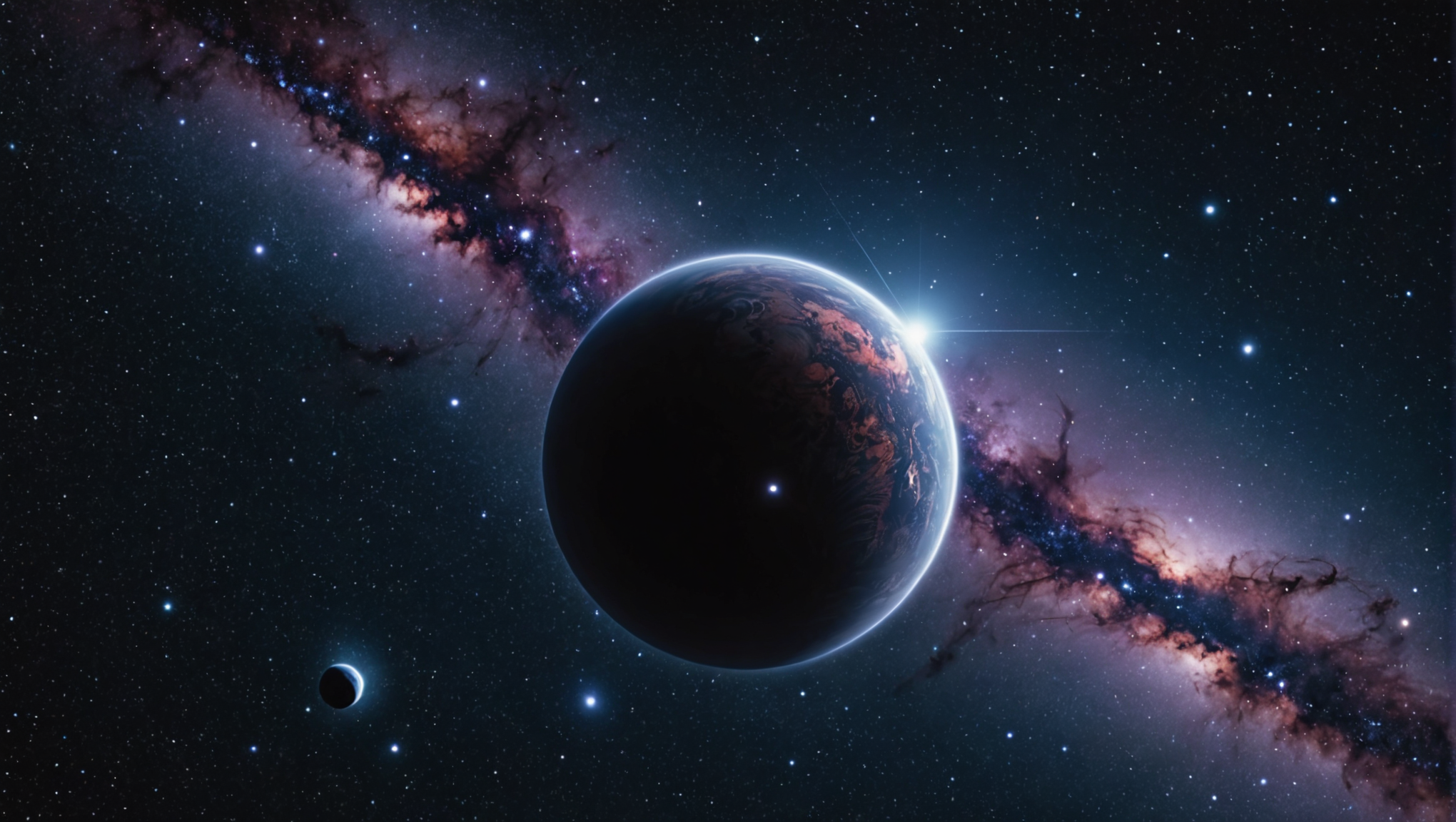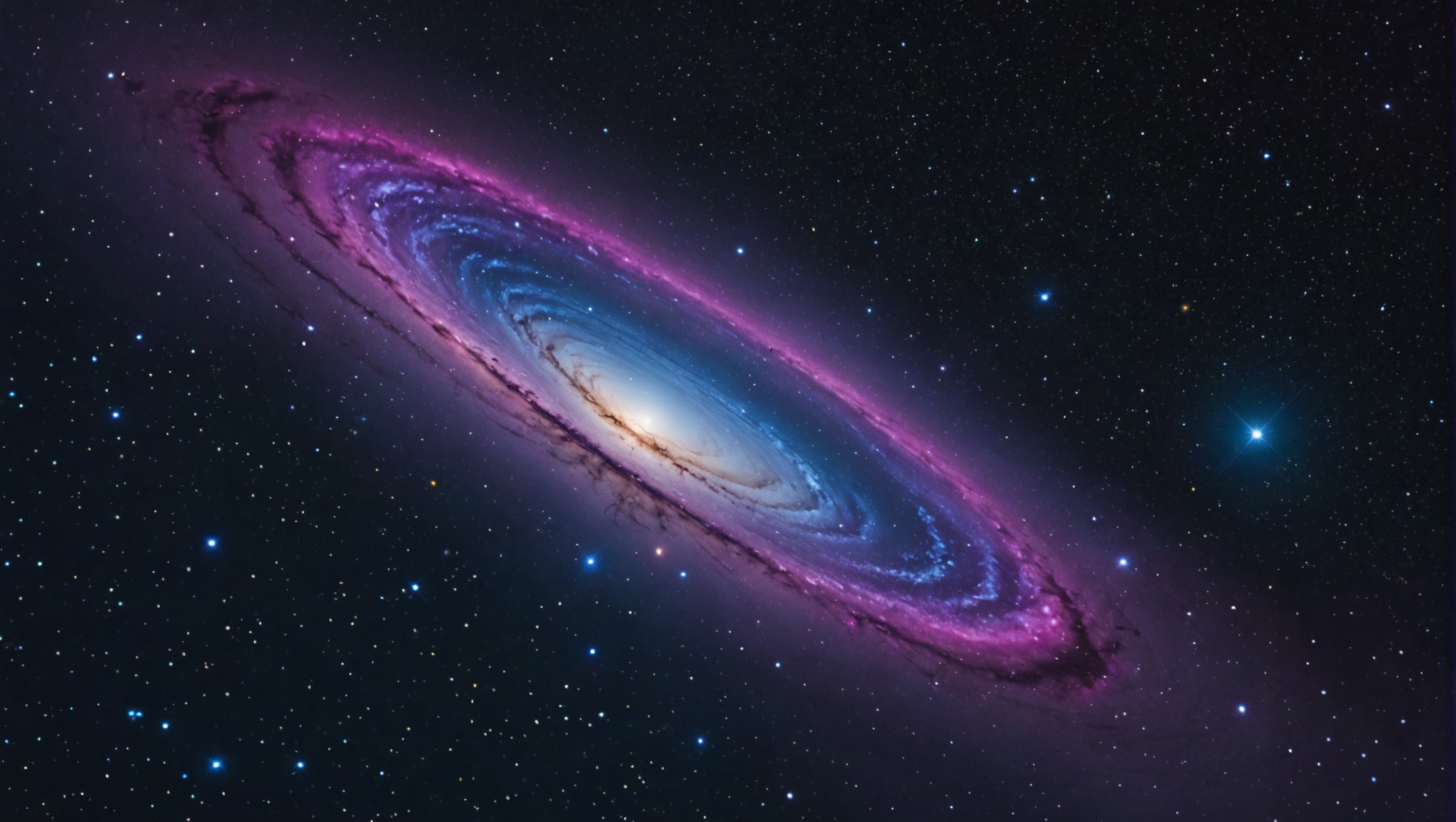Wandering Worlds and Cosmic Mysteries

Captivating mysteries of rogue planets
Rogue planets are captivating celestial bodies that traverse the vast reaches of our universe, unanchored from any star. These nomadic entities challenge our traditional understanding of planetary formation and offer profound insights into the dynamics of the cosmos. Unlike conventional planets that are tethered to a sun, rogue planets elude the gravitational grasp of stars, leading to intriguing questions about their origins and potential for life.
One fascinating aspect of rogue planets is their formation process. Traditional models of planetary formation suggest that planets develop in tandem with their stars, forming through the accretion of gas and dust within a protoplanetary disk. However, rogue planets present a compelling alternative narrative. It’s believed that many rogue planets could have initiated their journey within a solar system but were later ejected due to gravitational interactions with larger celestial bodies. This upheaval can occur during the chaotic early phases of a planetary system’s evolution, marking a significant departure from our explanations of how planets are traditionally formed.
Research suggests that there may be billions of rogue planets in our galaxy alone, each appearing as an isolated wanderer amongst the stars. These planets vary in size and composition, from mini-Neptunes to Earth-sized worlds, creating a diverse tapestry of planetary characteristics. One particularly intriguing case is that of PSO J318.5-22, a rogue planet about six times the mass of Jupiter, which was discovered emitting a faint glow indicating residual heat from its formation. This observation indicates that rogue planets can retain internal warmth, leading scientists to speculate about the potential for subsurface oceans beneath icy crusts. Such environments may provide habitats suitable for life, albeit in forms very different from what we typically encounter on planets orbiting stars.
The atmosphere of rogue planets also holds significance in the exploration of life’s potential. Studies of CFBD J214947.2-43084, another rogue planet located roughly 100 light-years away, have revealed intriguing atmospheric properties reminiscent of both gas giants and terrestrial planets. The unique conditions of rogue planets allow scientists to investigate new possibilities for exotic biomes, comparing them to environments on moons like Europa and Enceladus, which harbor subsurface oceans kept warm by geothermal processes.
Furthermore, rogue planets can challenge our definitions of habitability and the requirements for life. While they lack the consistent warmth of a star, the potential retention of geothermal heat raises questions about what constitutes a life-supporting environment. Could microbial life, for example, thrive in the hidden oceans of a rogue planet, nourished by the chemical energy of the planet’s interior? These inquiries expand our understanding of life’s resilience and adaptability, suggesting that environments thought to be inhospitable might still hold the key to discovering life beyond Earth.
The existence of rogue planets has far-reaching implications for our comprehension of cosmic evolution. The ejection of a significant number of planets from their host systems, particularly in dense star clusters where gravitational interactions are more common, hints at a dynamic and ever-changing universe. This realization compels scientists to reconsider their models of how planetary systems evolve over time. Additionally, the study of rogue planets offers new perspectives on the history of our own solar system and its formation processes. Could early rogue planets, expelled from their systems, have ultimately contributed to the mixing of materials necessary for planetary development elsewhere?
As astronomical technology continues to advance, the hunt for rogue planets is intensifying. Astronomers employ various observational techniques, including gravitational microlensing, to detect these elusive worlds. When a rogue planet passes in front of a more distant star, its gravitational field can bend the light from that star, offering valuable insights into its properties. The ongoing research and discoveries related to rogue planets invite us to rethink our models of planetary formation and migration and expand the horizons of astrobiology.
Ultimately, rogue planets encapsulate the myriad mysteries of the universe—signifiers of a more complex and dynamic cosmos than once believed. They compel us to question our assumptions about life, cosmology, and the formation of planetary systems. In this sense, rogue planets are not merely cosmic wanderers but rather intricate pieces in the grand puzzle of our universe, evoking wonder and curiosity as we continue to search for answers among the stars.

Enigmatic forces behind dark matter
Dark matter is one of the most profound enigmas that permeates our universe, constituting approximately 27% of its total mass and energy content, yet remaining invisible and undetectable through conventional means. The very notion of something so fundamentally integral to the structure of the cosmos existing outside of our perceptual grasp challenges the boundaries of human understanding. The evidence for dark matter emerges indirectly, primarily through its gravitational effects on visible matter. As astronomers observe galaxies, they note that stars on the outskirts move at velocities that cannot be accounted for by the mass of visible matter alone, leading to the inference that an unseen form of mass is at play.
One significant observation comes from the study of galaxy clusters. The gravitational lensing effect—which occurs when light from more distant objects is warped by the gravitational field of a massive object in the foreground—further elucidates the presence of dark matter. When scientists analyze the distribution of mass, including dark matter, they find that galaxies are embedded in halos of this unseen substance, exerting an influence that governs their motion and clustering on a cosmic scale. This “cosmic scaffolding,” provided by dark matter, not only holds galaxies together but plays an essential role in shaping the large-scale structure of the universe, forming a web that guides galaxy formation.
The implications of dark matter extend well beyond gravitational effects. It opens up exciting avenues for theoretical physics and cosmology, compelling researchers to ponder alternative explanations for the behaviors we observe in the cosmos. One avenue of inquiry focuses on the nature of dark matter itself. A high number of hypotheses have been proposed, including the existence of hypothetical particles like Weakly Interacting Massive Particles (WIMPs) or axions—each potentially revealing new dimensions of the fundamental forces at play in the universe.
Recent experiments aimed at directly detecting dark matter particles have pushed the boundaries of our investigative methods. These efforts often take place in underground laboratories carefully designed to minimize interference from cosmic rays and other forms of radiation. As scientists refine their techniques and technologies, the tantalizing promise remains that they might one day succeed in uncovering dark matter’s true nature, not just redefining our understanding of the universe but also potentially challenging the laws of physics as we know them.
Interestingly, the dynamic interplay between dark matter and cosmic evolution is an area of growing focus among scientists. Dark matter is believed to have played an important role in the formation of the first galaxies by providing the necessary gravitational framework in which ordinary matter could coalesce. Its influence prompts us to reconsider the timeline of cosmic evolution, providing insights into how galaxies form, evolve, and interact over billions of years. Thus, understanding dark matter is not just a quest for knowledge, but also a narrative about the very origins of structure in the universe.
Furthermore, the mysteries surrounding dark energy—another puzzling aspect of cosmic composition—are intertwined with dark matter’s implications. Dark energy, which constitutes approximately 68% of the universe, drives its accelerated expansion and poses questions about the fate of the cosmos. As scientists strive to understand how dark energy interacts with dark matter, they draw ever closer to discovering the fundamental workings of the universe that seem to underlie all cosmic phenomena.
The ancient astronomers who first gazed at the stars may never have imagined that they were witnessing the dance of forces that govern existence itself. Modern astrophysics builds upon that legacy, unraveling threads of knowledge that interweave dark matter, dark energy, and the fabric of our universe in a complex tapestry of cosmic evolution. As we probe deeper into the mysteries of dark matter, we find ourselves not only redefining the composition of the cosmos but also contemplating our place within this magnificent and largely unseen celestial architecture.

The profound implications of black holes
Black holes stand as some of the most profound enigmas within our universe, born from the remnants of massive stars at the end of their life cycles. When a star collapses under its own gravity, it can create a point of infinite density known as a singularity, surrounded by an event horizon—the boundary beyond which nothing can escape the black hole’s grasp. This unique interplay of gravity and spacetime has far-reaching consequences not only for cosmic structures but also for our fundamental understanding of physics itself. The implications of black holes challenge our notions of reality and may hold keys to some of the universe’s most pressing mysteries.
At the heart of the black hole phenomenon is the extraordinary warping of spacetime that occurs due to their immense gravitational pull. According to Einstein’s general theory of relativity, massive objects like black holes curve the fabric of spacetime around them, creating what can be envisioned as a deep well. As matter spirals toward a black hole, it forms an accretion disk, heating up and emitting powerful x-ray radiation that can be detected even from vast distances. This process presents astronomers with an indirect method of studying these otherwise invisible entities.
Moreover, the dynamics surrounding black holes can significantly influence other cosmic phenomena. For instance, the merger of black holes, which releases tremendous energy in the form of gravitational waves, has opened a new avenue of astrophysical research. Detected for the first time in 2015 by advanced observatories like the Laser Interferometer Gravitational-Wave Observatory (LIGO), these waves confirmed long-held predictions of general relativity and led to a deeper understanding of the merger process. Each collision serves as a testament to the powerful forces at play in the universe, reshaping our models of cosmic evolution.
The study of black holes also poses intriguing questions regarding the fundamental nature of information and reality. The paradox of information loss, which emerged from black hole thermodynamics, raises profound inquiries. When matter crosses the event horizon, does the information it carries cease to exist? This dilemma challenges our understanding of physical laws, particularly those pertaining to quantum mechanics. Some physicists, including Stephen Hawking, have proposed ideas that suggest information may not be lost but rather stored at the event horizon, implying a deeper connection between quantum mechanics and gravity—a tantalizing hint that might unify two pillars of modern physics.
Additionally, the existence of supermassive black holes at the centers of galaxies, including our Milky Way’s Sagittarius A*, reshapes our understanding of galaxy formation and evolution. It appears that these colossal black holes might play a critical role in regulating star formation in their host galaxies. As they grow by accumulating mass from surrounding material, they can emit powerful jets of energy that affect the interstellar medium, influencing the birth of new stars. This feedback mechanism presents a fascinating interplay between black holes and the structures of galaxies, compelling us to revise our theories of cosmic architecture and evolution.
In exploring the profound implications of black holes, we uncover layers of complexity that intertwine with our basic understanding of the cosmos. Each black hole discovered pushes the boundaries of our knowledge, enabling new scientific theories, observations, and debates on the fundamental nature of existence. As we continue to navigate the mysteries surrounding black holes and their role in the universe, we are challenged not only to rethink physics but also to contemplate our position within this dramatic cosmic narrative. In the end, the study of black holes reveals not just the depths of the universe but also the very essence of reality itself, inviting us to engage in an ongoing dialogue about the nature of existence that resonates far beyond the stars.